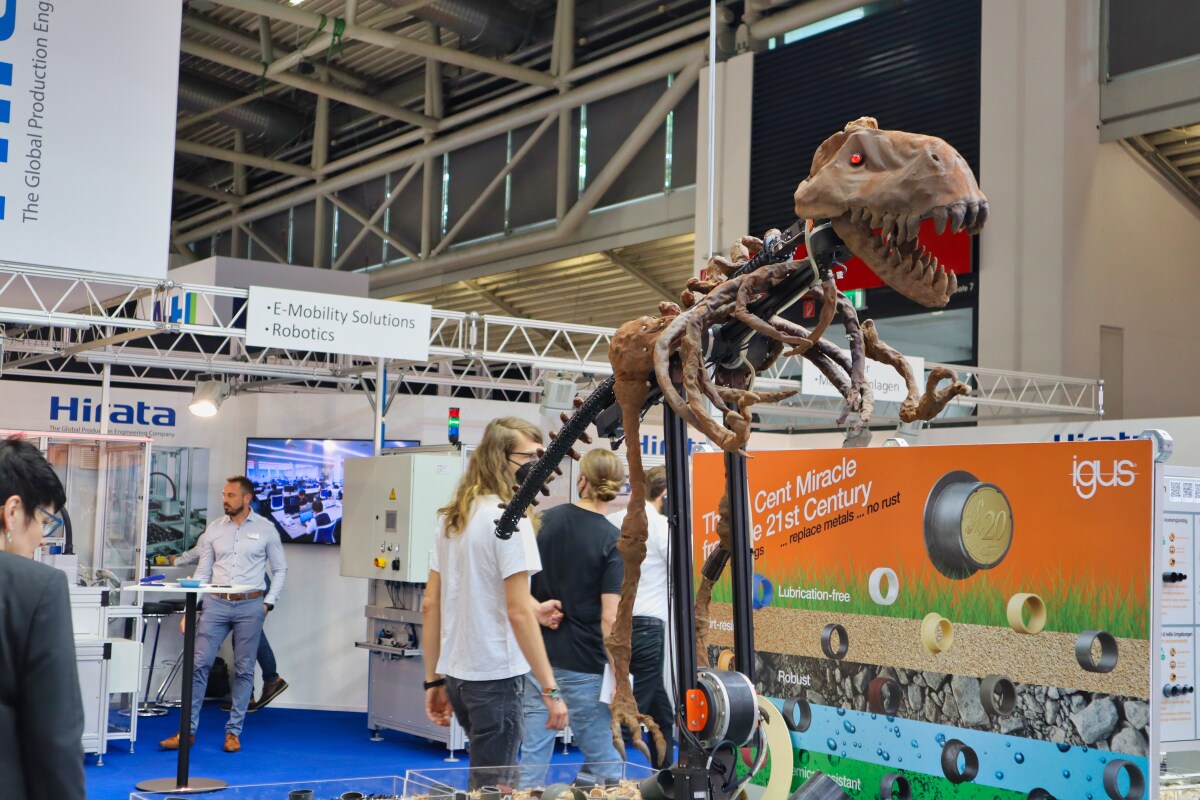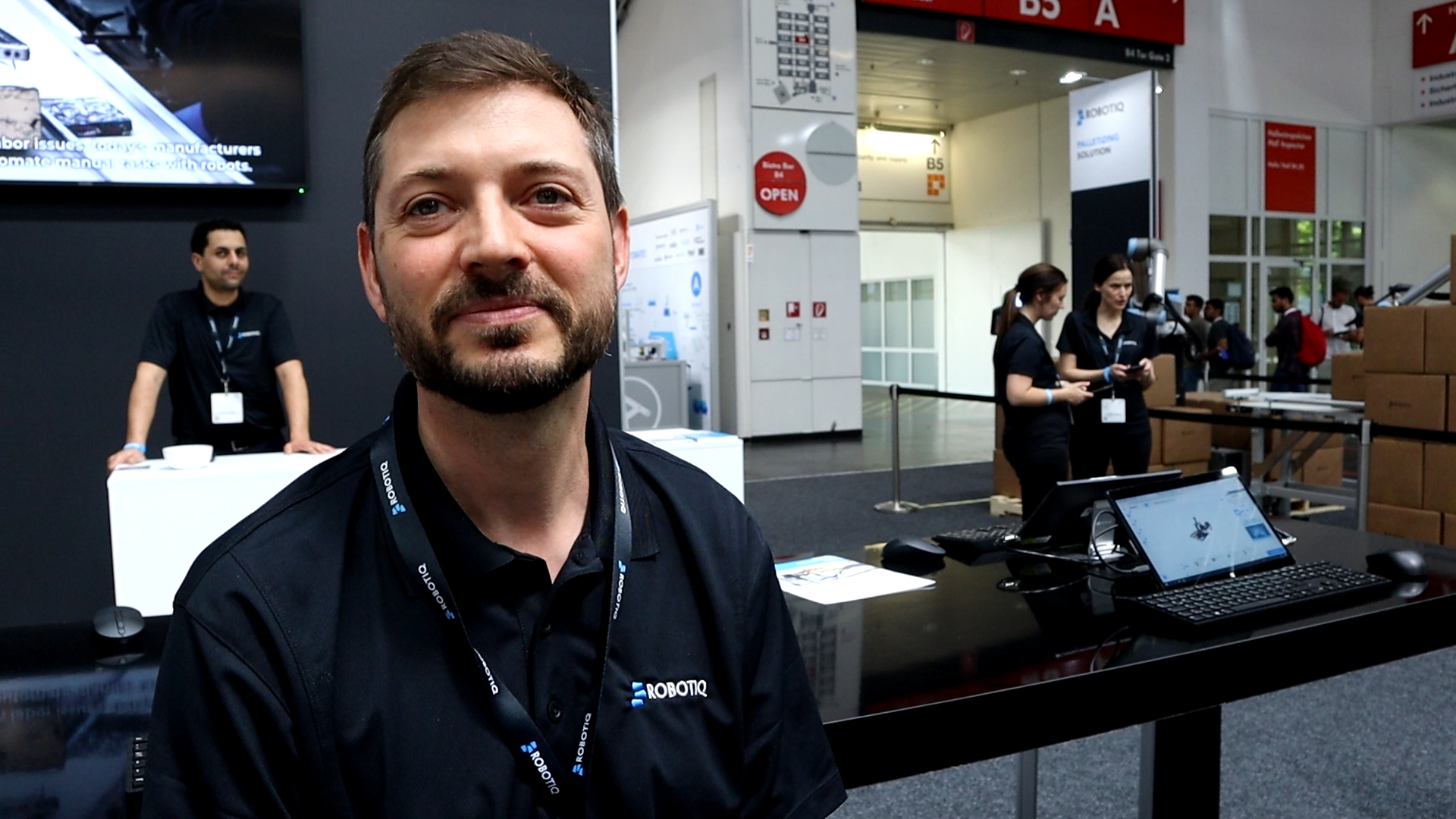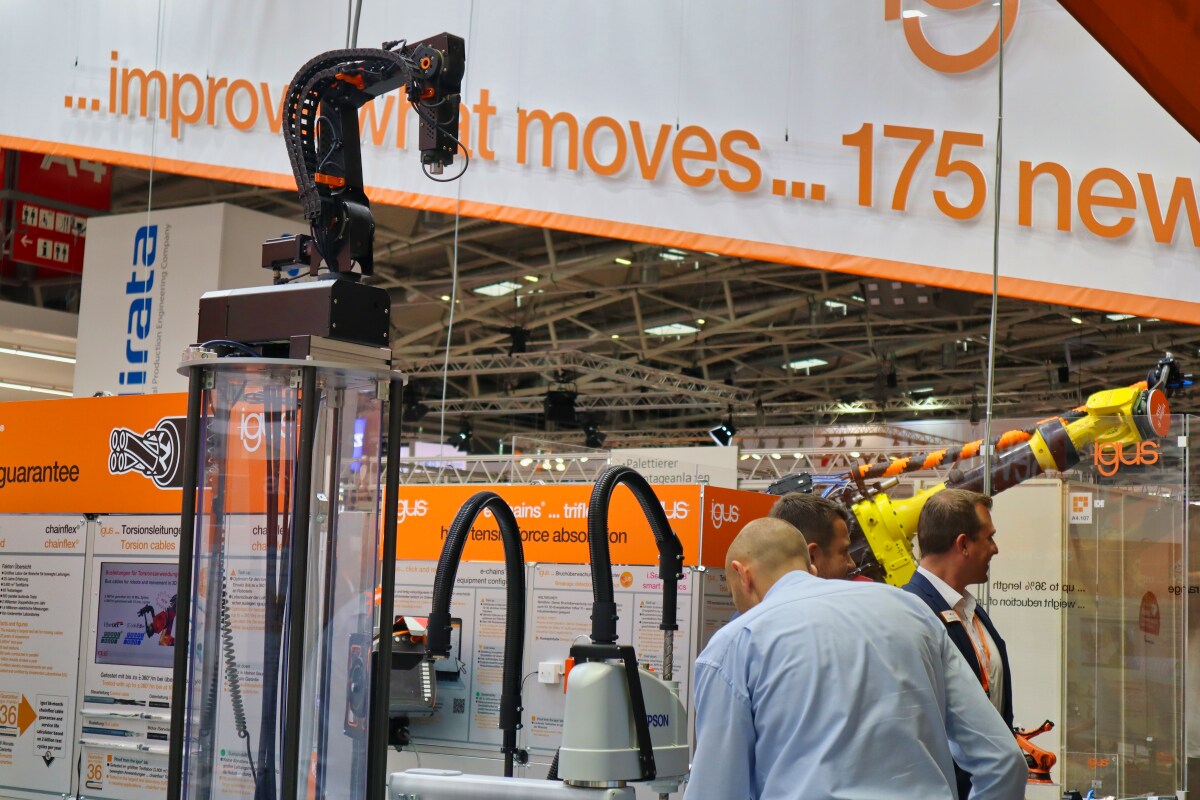What's New In Robotics This Week - Oct 27

-Manufacturing & Cobot Roundup
-Meet The World's First Robo-Citizen
-Versatile Bee-Bots Beat Water & Air
-Curiosity's Robot Drill Awakens
...and much more!
Manufacturing & Cobot Roundup
San Francisco-based robotics and artificial intelligence startup, Kindred, is running a pilot program at a Gap warehouse that combines its remotely operated Kindred Sort robot with software developed by industrial robotics specialists Fanuc.
 Caption: Pilots at a remote location can operate the robots for pick and place operations.
Caption: Pilots at a remote location can operate the robots for pick and place operations.
The system relies on a blend of AI-assisted automation and human piloting, The Verge reported:
“Our whole premise is that we want to be in a physical body, interacting with the world to learn. We want to provide the intelligence from the cloud, and then provide human intelligence when needed remotely,” [says] George Babu, Kindred’s chief product officer. [...]
Over time, algorithms should take over more and more complex tasks. But humans assist the robots along the way both to perform tasks the machine is incapable of performing today while generating data for the whole system to improve in the future, thanks to AI training techniques.
Kindred's business model involves charging on a 'pay-per-intelligent action' basis, with simple tasks costing a single cent (or fraction of a cent) and complex tasks costing 10-30 cents or more.
Some nifty video of a cobot in action at Barcelona 2017 was posted this week...
Robots won't steal your job, but manufacturing workers will still have to adapt, says K.R. Sanjiv, writing in Mashable. Sanjiv advises workers to hone their creative thinking skills and consider becoming trainers and 'explainers' --that is, mediators between new robotics technology and various stakeholders from senior management to end-users.
Voodoo Manufacturing was in the headlines again this week, this time in the context of lights-out manufacturing. Voodoo uses one UR10 cobot from Universal Robots to tend 100 3D-printers, 24/7.
Via Discover Magazine:
Voodoo set up its bot for roughly $50,000, and chief product officer Jonathan Schwartz says the system will have paid for itself in 6 months. Given the economics, small-scale firms like Plastic Components Inc. in Wisconsin are rolling out 24/7 manufacturing capabilities. The collaborative robots sector is set to grow tenfold by 2020, as firms look to cut costs and also assign dangerous production tasks to robots.
Take a peek inside an automated German manufacturing facility...
Cobots from Kuka, Schunk, and Stäubli stole the show at Motek Fair 2017. Via Machine Design:
"Robots are becoming smarter, easier to integrate, and safer for human collaboration, and the market is diversifying quickly so that any engineer or designer can enter. Motek Fair 2017 took place during the month of October and showcased efforts to enable better collaboration of robots, as well as to provide enhanced features for more optimized manufacturing."
The rise of robotics in China is sparking an investment boom, according to ECNS: "The year 2016 was already a banner year for robotics companies' acquisitions, whereby 50 were sold for over $19 billion, according to calculations made by industry site therobotreport.com. Among them, over 47 percent involved Chinese money, with Midea's high-profile purchase of German robot maker Kuka AG drawing significant attention worldwide."
Ulrich Spiesshofer, the CEO of Switzerland-based industrial robot giant ABB, spoke about the rapid growth of robotics in China:
CNBC reports:
"ABB is clearly the number one in China. Our long-term investment that started more than a decade ago in China is paying off," he said. Beijing has made robot manufacturing a clear policy priority. In 2015, the government announced its Made in China 2025 intitiatve, aimed at boosting development in high-tech. It then introduced a Robotics Industry Development Plan, a five-year program to rapidly grow its industrial robotics sector.
According to Nikkei Asian Review, Chinese demand has generated a 3rd quarter boom for Japanese robot makers.
Robotiq CEO, Samuel Bouchard, appeared in Chief Executive, where he shared 4 principles that manufacturers adopting cobots should embrace:
Samuel Bouchard, CEO of Robotiq, a leading manufacturer of plug-and-play collaborative robot tools, told Chief Executive that while co-bots are becoming less expensive and easier to use, manufacturers need to start with a plan and understand the principles of robotics. Bouchard said the barriers to adopting aren’t the machines themselves but “everything around them” in what’s known as the robotic cell.
“The robot itself is easy. But you need tooling, programming, the ability to interface with other machines. Then there’s the project management standpoint. The question is how do you go from manual process to using a co-bot,” he said.
You can learn more about the Lean Robotics principles that enable safe, fast, and effective development of automated manufacturing cells, right here.
Epson asked "Can robots reboot manufacturing in Europe?"
Microsoft has stopped manufacturing its Kinect sensor and will focus on augmented reality Hololens technology instead, according to reports, but it's not "the end of the world" for roboticists that have used Kinects in everything from drones through human-robot collaboration research:
Petar Kormushev, who leads the Robot DE NIRO project at Imperial [said] that it was “not going to be the end of the world”. He said that there were at least four other products that could replace Kinect, and that any gaps in the market will not last for long. “If there’s a void it will be filled,” he said.
Automata's low-cost, lightweight Eva cobot, which first grabbed headlines back in 2015, resurfaced this week after some serious trial testing and redesign.
Drives & Controls has the details:
Automata is back with a new-look version of Eva at a slightly higher price – £4,990 ($6,570) – and a larger payload capacity – 1.25kg, compared to the original 750g. The company – founded by former architects, Mostafa Elsayed and Suryansh Chandra – has spent the past two years refining and enhancing the robot, which has been through more than 18 versions and been subject to rigorous lifetime testing. Even at its new price, the robot arm is claimed to be much cheaper than conventional arms of a similar size, which can cost more than £20,000 ($26,360).
Meet The World's First Robo-Citizen
Hanson Robotics' humanoid bot Sophia stunned attendees at the Future Investment Initiative conference this week by announcing that she has been granted citizenship of Saudi Arabia:
Dezeen reports:
"I am very honoured and proud of this unique distinction. This is historical to be the first robot in the world to be recognized with a citizenship," she said. Specific details of Sophia's citizenship were not discussed. It is unclear whether she will receive the same rights as human citizens, or if Saudi Arabia will develop a specific system devoted to robots.
While developments like these might come across as gimmicks designed to attract publicity, they confront crucial ethical, philosophical, and legal questions around the future of robotics and AI, such as: What is personhood? Should robots be granted personhood status? What rights and responsibilities, if any, should a robot have? What about cyborgs with robotic prostheses?
The name Sophia is derived from the ancient Greek word for wisdom (and can claim co-origin of the word philosophy), but some are already questioning the wisdom of this move.
Friedrich Nietzsche, perhaps fatally misunderstanding the hardware/software distinction, wrote in Thus Spake Zarathustra: “There is more wisdom in your body than in your deepest philosophy."
One thing's for sure. Interesting times lie ahead for Sophia, a completely new type of citizen on the world stage, but one that shares in the same qualities of autonomy, intelligence, and embodiment as the rest of us.
Versatile Bee-Bots Beat Water & Air
A team of scientists based in Harvard has created a new type of bee-bot that can operate in air and water thanks to an insect-inspired wing design.
Via Science News:
The robots are equipped with their own little chemical labs to help them escape from water after they take a plunge. The “buoyant outtriggers” break down surrounding water into hydrogen and oxygen gases that build up underneath the robo-bee. After enough gas is generated, a lighter sets it on fire, the force of which shoots the robot about 30 centimeters (12 inches) into the air. It can’t fly when wet, but it can land gracefully to dry off after about a half a second.
Curiosity's Robot Drill Awakens
After a 10-month hiatus, Mars Rover Curiosity's robot drill has finally pressed itself against Martian soil again. It's all part of tests designed to evaluate the feasibility a proposed new drilling method, made necessary by a 2016 failure of the feeding mechnism.
Space reports:
The technique involves using Curiosity's 7-foot-long (2.1 meters) robotic arm to push the extended drill bit into rock, without the aid of two stabilizing posts. In the old method, the stabilizers were pressed to the rock, one on each side of the withdrawn bit; the bit was then pushed forward via a "drill feed mechanism.
Elsewhere in space robotics, astronauts aboard the International Space Station remotely operated humanoid robots at a facility near Munich. NASA and other space agencies have plans to use teleoperated bots in future planetary and asteroid exploration missions. IEEE Spectrum has the details.
There will be no time for a 10-month hiatus around these parts, as I'll be back next week with more news from the world of robotics. Until then, please enjoy these videos and links!
Sri Lanka launches first banking robot (Vanguard)
Robots Break Popular ‘I Am Not a Robot’ Tests (Inside Science)
Overview of the International Conference on Robot Ethics and Safety Standards – with survey on autonomous cars (Robohub)
Northark robot serves cake; 50th anniversary of Vo-Tech (Harrison Daily)
Robot women in Asia now have human stylists (Quartz)
Robotic docs can boost surgery time and cost (Science News)
This Robot Will Handle Your Divorce Free of Charge (The Wall Street Journal)
Why Human-Controlled, Force-Multiplying Robots Are the Future of Work on Earth (IEEE Spectrum)
Powering the world’s robots—10 years of ROS (Science Robotics)
Investor Billions Return to Spark India’s High Tech (Asian Robotics Review)






Leave a comment